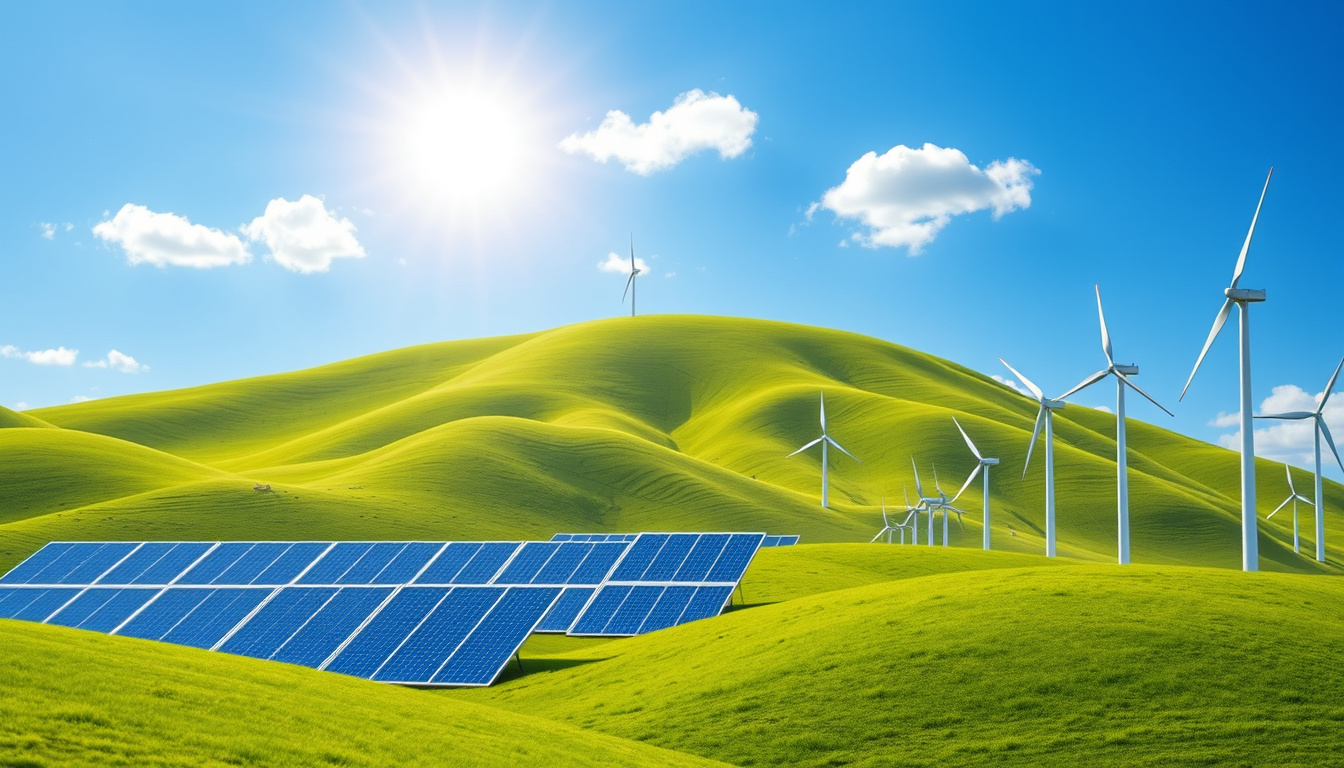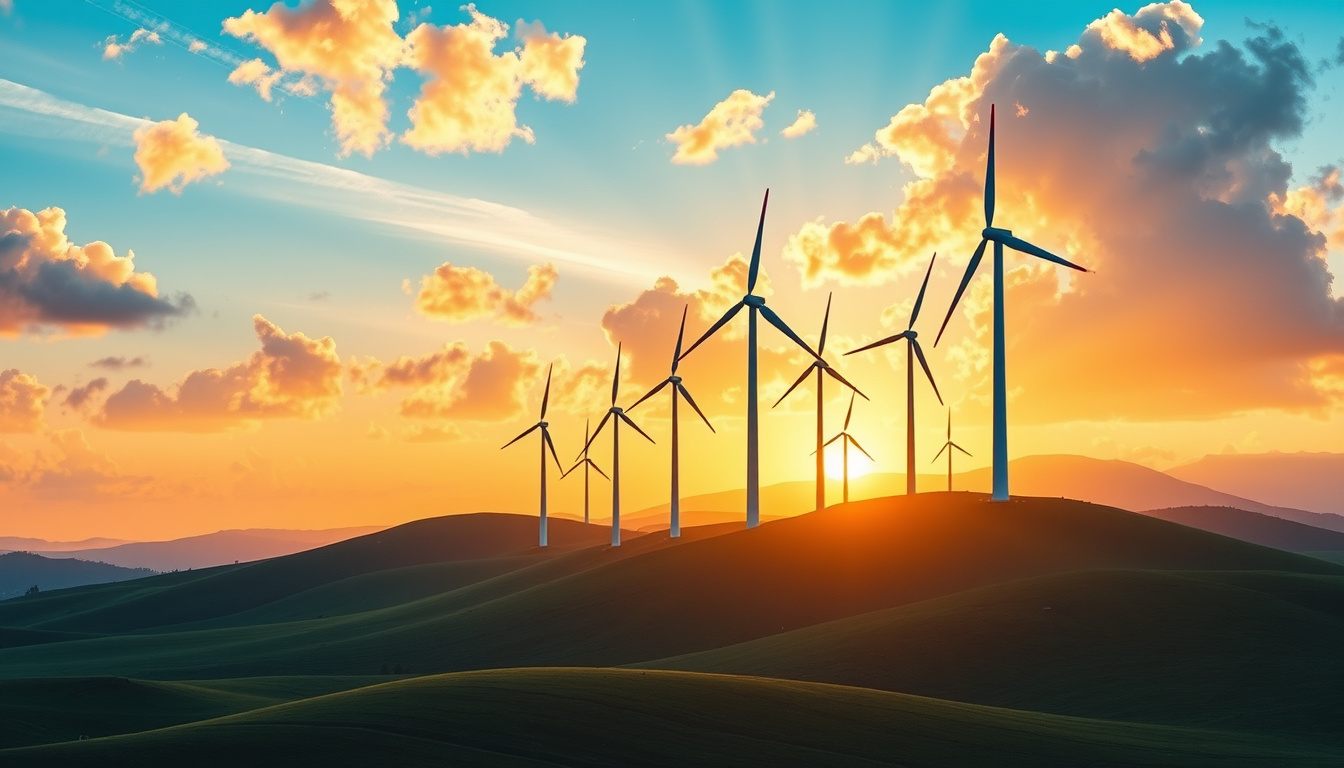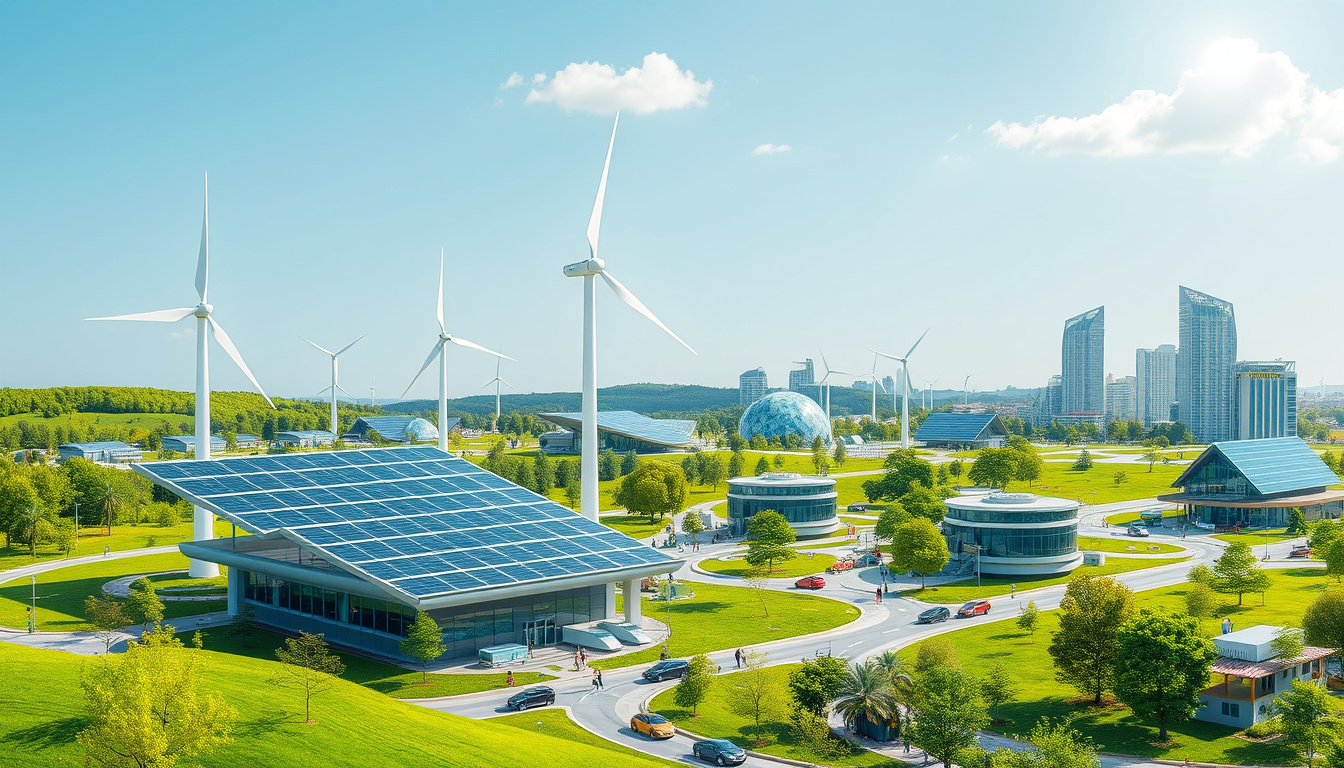In today’s world, the conversation around energy has shifted dramatically towards sustainability and environmental responsibility. With the effects of climate change becoming increasingly evident, the emphasis on renewable energy sources has never been more critical. Among these, solar and wind power stand out as two of the most prevalent options available. This article, ‘Renewable Energy: Solar and Wind Power Explained,’ delves into the fundamentals of these energy sources, their mechanisms, their benefits and drawbacks, and looks ahead at trends shaping the future of renewable energy. Join us as we explore how solar panels collect sunlight and how wind turbines convert breeze into electricity, paving the way toward a cleaner, more sustainable future.

Key Takeaways
- Renewable energy is essential for sustainable development and reducing carbon footprints.
- Solar power harnesses sunlight through photovoltaic cells to generate electricity.
- Wind power captures the kinetic energy of wind using turbines for electricity production.
- Both solar and wind energy have unique advantages and limitations, making them complementary options.
- The future of renewable energy is bright, with continuous advancements in technology and increased adoption worldwide.
Introduction to Renewable Energy
Renewable energy sources, such as solar and wind power, have gained significant attention as sustainable alternatives to fossil fuels. As the world grapples with the impacts of climate change and the depletion of non-renewable resources, understanding the basics of renewable energy becomes crucial. Renewable energy primarily harnesses natural processes that are consistently replenished, such as sunlight and wind. Solar power, for instance, utilizes photovoltaic cells to capture sunlight and convert it into electricity, while wind power exploits the kinetic energy generated by moving air to turn turbines that produce power. With technological advancements and decreasing costs, renewable energy sources are not only viable solutions for reducing carbon footprints but also crucial for transitioning to a more sustainable and resilient energy future. This article delves deeper into renewable energy: solar and wind power explained, highlighting their importance, benefits, and the role they play in combating environmental challenges.
Understanding Solar Power: How It Works
Solar power is one of the most promising sources of renewable energy, harnessing the sun’s rays to generate electricity. Understanding how solar power works begins with the sun itself, which emits energy that can be captured using solar panels. These panels consist of photovoltaic (PV) cells that convert sunlight directly into electricity through the photovoltaic effect. When sunlight hits the cells, it excites electrons, generating direct current (DC) electricity. This DC electricity is then converted to alternating current (AC) by an inverter, making it usable in homes and businesses. Additionally, solar power systems can be paired with battery storage solutions, allowing users to store excess energy for use during non-sunny periods. This functionality emphasizes the role of renewable energy in reducing reliance on fossil fuels and mitigating climate change. Alongside solar power, wind power also plays a critical role in the renewable energy landscape, where wind turbines capture kinetic energy from wind and convert it into electrical energy. Together, renewable energy sources like solar and wind power offer sustainable alternatives that can help meet the growing global energy demands while protecting our environment.
‘The future is not something we enter. The future is something we create.’ – Leonard I. Sweet

Exploring Wind Power: Harnessing The Wind
Renewable energy is rapidly gaining traction as a viable solution to combat climate change and reduce our dependence on fossil fuels. Among the most promising sources of renewable energy are solar and wind power. While solar energy captures sunlight and converts it into electricity using photovoltaic cells, wind power harnesses the natural movement of air to generate energy through turbines. Exploring wind power reveals its immense potential in a clean energy future. Wind turbines, strategically placed in areas with consistent wind patterns, can produce significant amounts of electricity with minimal environmental impact. Furthermore, as technology advances, wind energy becomes increasingly efficient and cost-effective, making it a critical component of the global energy mix. With growing concerns over climate change, understanding renewable energy sources like solar and wind power is essential for shaping a sustainable future.
Comparing Solar and Wind Energy: Pros and Cons
When diving into the world of renewable energy, it’s essential to understand the two most prevalent sources: solar and wind power. Both provide sustainable alternatives to fossil fuels, yet they come with their unique advantages and drawbacks.
Solar Energy harnesses sunlight using photovoltaic cells in solar panels, converting it into electricity. One of its significant benefits is that it can be deployed on various scales, from small residential rooftops to large utility-scale solar farms. Moreover, solar energy systems typically have low operational costs after installation, contributing to reduced long-term energy bills. However, solar energy’s efficiency relies heavily on weather conditions and daylight hours, making it less predictable during cloudy days or nighttime. This intermittency can necessitate additional energy storage solutions or backup systems.
On the other hand, Wind Energy uses turbines to capture the kinetic energy from wind and convert it into electricity. Wind farms, often located in areas with consistent and strong winds, can produce large amounts of energy, making them an efficient power source. The land used for wind farms can also serve dual purposes, such as agriculture or grazing, which can be economically beneficial. Nonetheless, wind energy is not without challenges; it can be affected by fluctuations in wind speed, and there are concerns about noise and the impact on local wildlife, particularly birds and bats. Furthermore, the installation of wind turbines often requires significant upfront investments and infrastructure development.
In summary, while both solar and wind energy present viable options for a sustainable future, they cater to different geographic and economic contexts. Understanding these distinctions is critical when making informed decisions about renewable energy: solar and wind power explained.

The Future of Renewable Energy: Trends and Innovations
The future of renewable energy hinges on the innovative advancements in solar and wind power technologies, which are becoming increasingly essential in combating climate change and fostering sustainable energy practices. As we witness a global shift towards clean energy solutions, it’s important to understand how renewable energy—particularly solar and wind power—continues to evolve. For instance, solar power has seen remarkable improvements in efficiency and energy storage capabilities, making it a more viable option for residential and commercial use. Coupled with this, wind energy systems are becoming more robust, with larger turbines capable of generating more electricity with less environmental impact. Both sectors are being propelled further by policies supporting renewable energy technology and deepening investments in research and development. As consumers and businesses adopt these solutions, understanding the dynamics of renewable energy: solar and wind power explained becomes crucial. This knowledge not only promotes informed decisions but also empowers communities to harness nature’s resources sustainably.
Frequently Asked Questions
What is renewable energy?
Renewable energy is energy derived from natural processes that are continuously replenished, such as sunlight, wind, rain, tides, waves, and geothermal heat.
How does solar power work?
Solar power works by converting sunlight into electricity using photovoltaic cells or solar panels, which capture and convert the energy from sunlight into usable electrical energy.
What are the main differences between solar and wind energy?
Solar energy captures sunlight while wind energy harnesses the kinetic energy from wind. Generally, solar power can be installed in a wider variety of locations, while wind power requires specific site conditions to be efficient.
What are the advantages of using renewable energy sources like solar and wind?
The advantages include reduced reliance on fossil fuels, decreased greenhouse gas emissions, sustainability, and potential cost savings on electricity bills over time.
What is the future outlook for renewable energy technologies?
The future of renewable energy looks promising with ongoing advancements in technology, increased investment in renewables, and growing support for sustainable practices, leading to more efficient and cost-effective energy solutions.

Leave a Reply